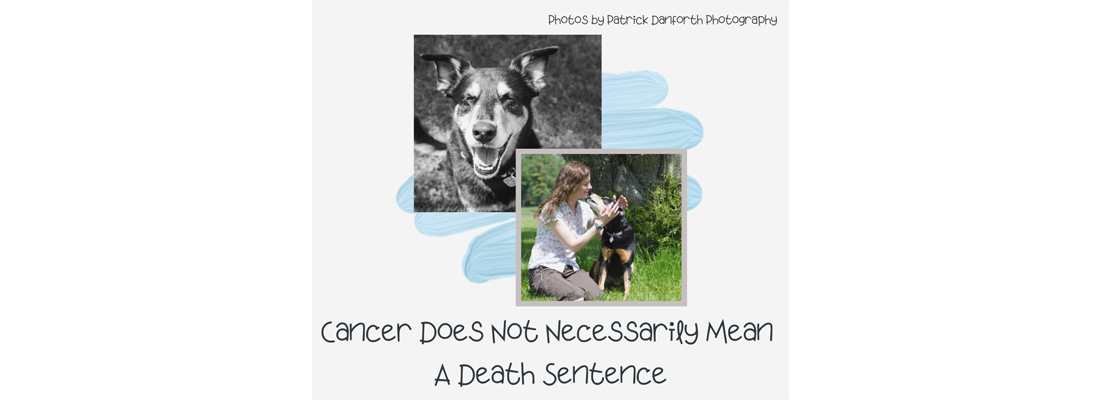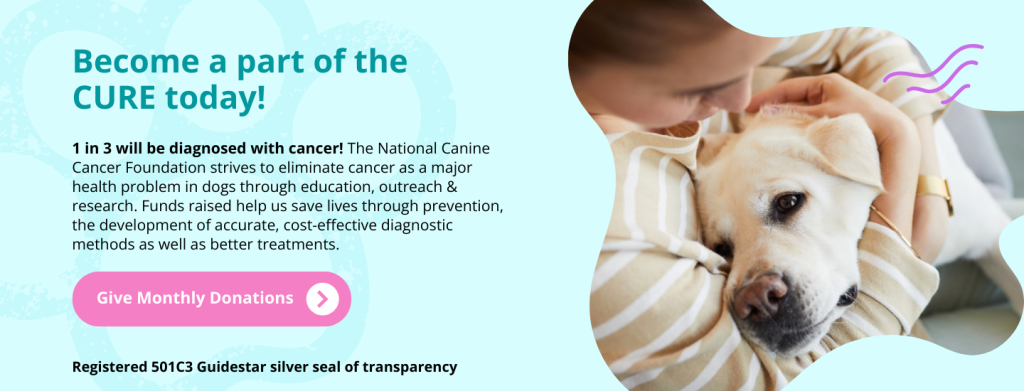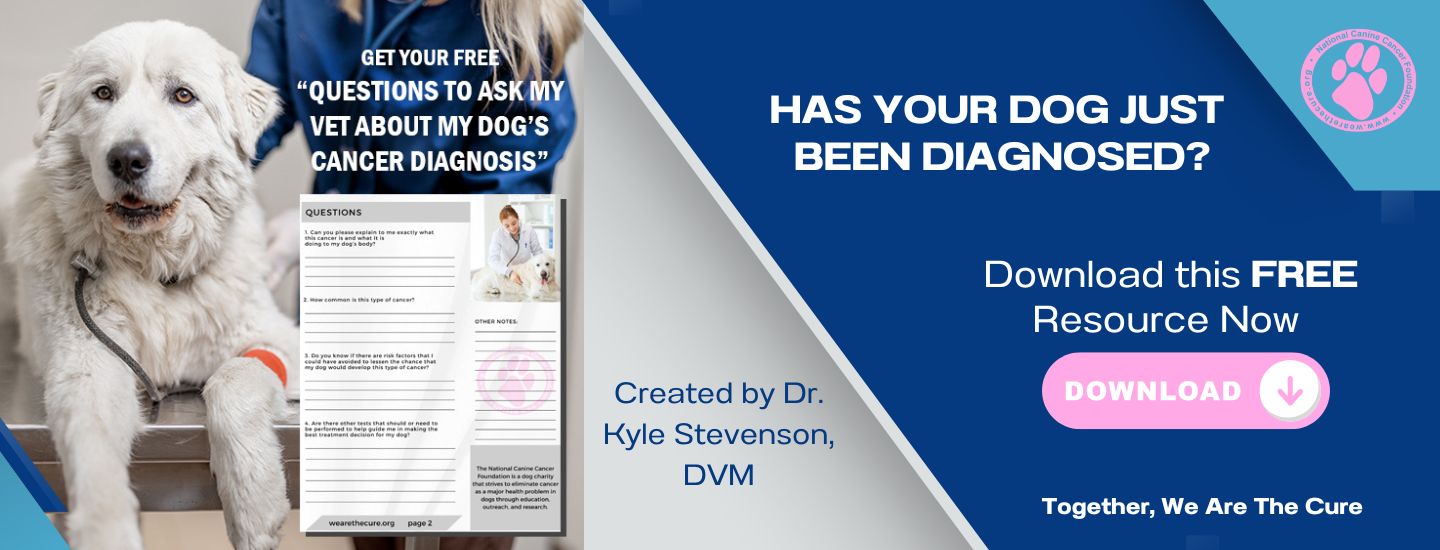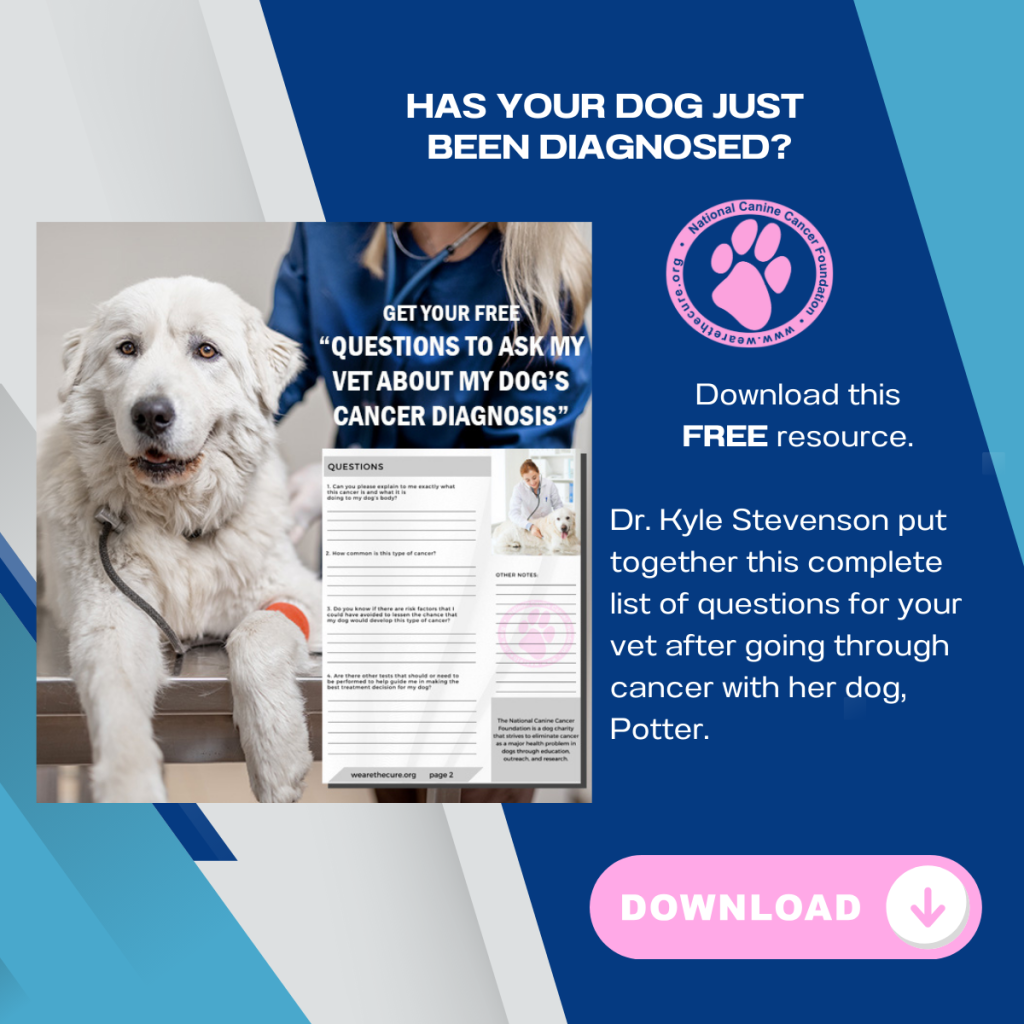My dog has cancer, now what can we do?
“THERE IS NOTHING MORE THAT WE CAN DO.”
This uttered phrase is perhaps worse than hearing the phrase, “Your dog has cancer.”
It sears you like a red-hot fire iron, the resulting burn creating a much longer-acting pain than the unexpected incident itself. It is difficult to focus on much of anything else except for that pain. You were supposed to be the protector, the one who shielded your best buddy against all of the bad things in the world.
But, now, your protective shield has somehow been compromised, the tiniest of unrecognized holes allowing cancer to seep through. You feel defeated, helpless, and perhaps guilty. What did you do to weaken that shield? Did you let your guard down somehow?
When you stare into your dog’s eyes, all you see is love, affection, and naivety. Naivety . . . because they do not know that they even have cancer, let alone that you can’t do anything about it to help them. All they know is that they don’t feel quite right.
That’s where I found myself standing five and a half years ago. While I wasn’t told that nothing at all could be done, it was evident that whatever conventional treatment options that I chose would unlikely slow the progression of my best friend’s cancer. My protective shield was faulty, and I hadn’t seen the dent and the hole in it.
Despite what my veterinary-trained brain told me, I let my fear of the unknown and my pained heart make most of the decisions surrounding Potter’s cancer diagnosis. My dog has cancer, now what can I do, I needed to do something. I elected to attempt chemotherapy with Potter, hoping that it would slow down the cancer and keep it from spreading somewhere else.
I knew deep down in my heart that chemotherapy likely would have no benefit, but I couldn’t bring myself to “give up” on Potter, either. Perhaps, I chose this treatment option out of guilt – guilt that I hadn’t recognized Potter’s decline earlier. Perhaps, I chose it out of selfishness – selfishness that I couldn’t bear the thought of living in a world without him. Perhaps, I chose it out of hope – hope that by some miracle of miracles Potter would feel better. Maybe, the reasoning behind my decision was a combination of those feelings. Regardless, we embarked on the journey of chemotherapy treatment, and I hoped and prayed that it would make a noticeable difference in Potter’s quality of life and survival time.
Potter made it through one round of doxorubicin chemotherapy before his cancer became too much for him to handle. I lost him two weeks to the day of him being diagnosed. While I do not regret having him treated as aggressively as possible to ward off his cancer for as long as possible – if I had to do it all over again, I would still choose the same treatment – I do still wonder if it made any difference at all with regards to Potter’s survival time.
I still to this day would like to think that treating Potter with chemotherapy benefited him at least a little bit. But, I think that it was a combination of the chemotherapy, the medication to improve his appetite, and the many short, but fun, outings that we shared with each other that gave us those last two weeks together.
Do Dogs Survive Cancer?
What I learned – much after-the-fact, unfortunately – from that experience was that, even when faced with the absolute worst cancer diagnosis, there always seems to be SOMETHING that can be done.
And, in my veterinary-trained brain, I have lumped those “somethings” into four possible categories . . .
- traditional cancer therapy
- integrative and alternative cancer therapy
- hospice and palliative care
- humane euthanasia
The last category is obviously the least favored one, the end-result of why we feel so much pain and despair when we receive that cancer diagnosis in our pets in the first place. It brings with it so much finality, so much grief, and so much guilt. At the time I was going through this as a pet parent myself, I felt all of those things, too. But, as both a veterinarian and a pet parent, because of situations that I have been in since that time, I can look back at that darkest time of my entire life and say that humane euthanasia was a treatment option. It was a precious gift. But, that information, that story, is for another time.
If we focus on the other three categories, in almost all instances, there is something that can be done.
My dog has cancer but, “something can be done.” What does that mean? I think that means different things to different people, and I think people’s expectations differ depending on their surroundings . . . how they were raised, what their education was like, what their morals and beliefs are, who is important to them, etc. For one person, the phrase “something can be done” may mean a cure for cancer, with no other option being acceptable. Well, we all would like to have that ideal scenario. For another person, it may mean a treatment that will keep the cancer in check for as long as possible and allow their pet to enjoy their lives for as long as possible. For still yet another person, it may mean keeping their pet as comfortable as possible with pain management until the cancer has run its course. And, there are variations of those expectations. Many times, financial stability factors into those expectations, as well as previous experiences.
Regardless of what a person’s expectations might be, there is still almost always something that can be done to try to increase the canine cancer survival rate.
What is a Cancer Dogs Life Expectancy?
If we are lucky, we may find ourselves facing surgery, chemotherapy, and/or radiation (traditional) therapy as a means to cure our pet. Sometimes, those treatment modalities may not result in a cure, but they may result in remission that will allow our pets to live happy, full lives for as long as possible. Sometimes, we are even offered immunotherapy and other out-of-the-box options to achieve those same remission goals.
Some cancer diagnoses may benefit from integrative/alternative therapy, and sometimes this type of therapy is tolerated better by patients who did not tolerate more traditional forms of cancer treatment previously. These more non-traditional treatment options may include a focus on nutrition, the use of herbs, acupuncture, etc.
Perhaps the cancer diagnosis came at an advanced stage, or perhaps the cancer wasn’t responding to more traditional forms of treatment, or perhaps the presented treatment options were just too expensive. Oftentimes, these pets can still be given a good quality of life – even if that time is short – with hospice and palliative care. These treatment options may simply include steroids, pain medication, anti-nausea medications, vitamins, etc.
Is Cancer A Death Sentence?
One of my favorite phrases is, “cancer does not necessarily mean a death sentence.” And, I truly believe that rings true for our pet patients. Yes, our spirits are crushed when we get a cancer diagnosis for our pets. But, most of the time, there is something that we can do to make our pets feel better. The emotional “burden” of their cancer diagnosis really falls onto us as pet parents. They don’t know that they have cancer. All that they know is that they currently don’t feel very good. What can we do to make them feel better right now?
So, if you are faced with a cancer diagnosis in your pet and are told “there is nothing more that we can do,” please make sure to advocate for your pet. Veterinarians in general practice learn a multitude of things about a multitude of different diseases, and that means that, sometimes, they may not have all the answers about current or upcoming treatment protocols. Perhaps a second opinion from a veterinary oncologist would be helpful. Utilize all of the resources that you have available to you. It never hurts to ask. Once you have all of the information that is available, you can make a more educated decision on how to proceed. But, sometimes, you have to advocate for your pet. You know your buddy better than anyone else does. Know that, and realize that it is okay to advocate for additional resources (a second opinion, educational articles, etc.).
And, if your pet is one of the few that is incredibly sick from cancer and cannot sustain a good quality of life with any of the treatment options above, know that humane euthanasia is still an option. And, that option is not “wrong.”
What Do I Do Once I Have Received a Canine Cancer Diagnosis?
Stay “pawsitive” that things will get better, that this cancer diagnosis doesn’t necessarily have to mean an immediate death sentence. Just say to yourself, my dog has cancer, now what can I do? Know that there are options out there – you only have to ask about them. Only then can you make an educated decision on what is best for everyone involved, and especially for your pet.
Never forget that your pet doesn’t know that he/she has cancer. We just have to make them feel better, to allow them to feel joy again each day that they are alive, no matter how much longer that may be for.
Other Articles of Interest:






I have an 11 yr old dog who is suffering with cancer. He has no appetite to eat, lost extreme weight, unbalanced walk and vomiting now daily more than 4 times in a day.
I read that dogs can be euthanized at home. How can this be done for my dog? And how much does it cost? I am unable to pay for euthanasia at the veterinary.
Hello Yvette, I am so sorry to hear this, I know it is very hard. Yes, dogs can be euthanized at home but you have to find a vet in your area willing to travel to your home. Your vet may offer that, or a traveling vet also would offer it. Pricing varies across the country so you would just have to call. We will be thinking about you and your sweet pup.